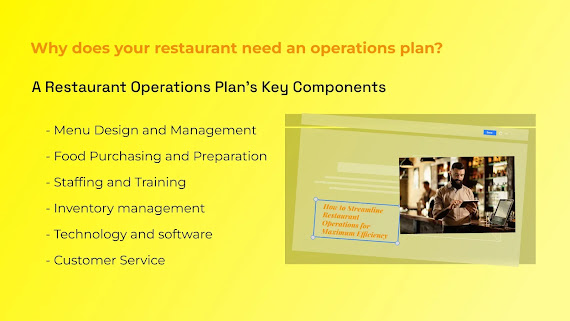Restaurant Staffing 101: Expert Tips and Strategies for Hiring the Best
In the realm of the food service industry, human capital is the linchpin. Every facet of a restaurant, from food preparation to service, hinges on its employees. Yet, the challenge of finding and retaining the right team members remains one of the most daunting aspects of running a restaurant.
Your restaurant's staff is not just a workforce; they are an extension of your brand and a crucial component of your management system. Therefore, investing time and effort in hiring and training the right staff is paramount.
This article serves as your 'Restaurant Staffing Guide,' offering insights into finding, hiring, and retaining the best talent for your restaurant.
What is Restaurant Staffing?
Restaurant staffing encompasses the entire process, from recruiting and retaining employees to crafting daily shift schedules. Depending on the venue's size and type, staffing may involve hiring and training specialized front-of-house and back-of-house staff or a select few versatile employees donning multiple roles.
Why is Staffing Restaurants So Challenging?
A staggering 30% of restaurant owners and managers consider staffing the most challenging aspect of their business, surpassing concerns like accounting, inventory, and marketing. Several factors contribute to this difficulty:
- High Turnover: Restaurants often replace up to three out of every four staff members annually, incurring significant costs in productivity loss and hiring expenses.
- Labor Shortage: The global labor shortage, exacerbated by the pandemic, has hit the restaurant industry hard. The diminishing labor pool poses a constant challenge in finding skilled personnel.
- High Labor Costs: Labor constitutes a substantial portion (31.6%) of a restaurant's operational costs. Balancing rising wages and labor demands within slim profit margins is a perpetual struggle.
- Low Profit Margins: With an average profit margin of 10.6%, restaurants have little financial flexibility, making it challenging to meet increasing labor costs.
- Demanding Regulations: Adhering to labor laws while navigating hiring, scheduling, and other staffing nuances adds complexity to the process.
8 Restaurant Staff Hiring Tips
- Develop a Specific Job Description: Craft a detailed job description to attract qualified candidates.
- Define Success in the Job Posting: Clearly articulate what success means for your restaurant and the specific role in question.
- Identify the Right Employees: Target networks that yield high-quality candidates for your job advertisement.
- Conduct Screening Interviews: Conduct preliminary phone interviews to ensure applicants possess the necessary knowledge.
- Do More Than Just Ask Questions: Evaluate candidates by incorporating challenges, role-playing, and shadowing in the interview process.
- Contact References: Verify the credibility of your top candidate by contacting their references.
- Make the Offer: Extend a job offer and be prepared to negotiate terms.
- Set New Employees Up for Success: Provide thorough training and shadowing for a successful onboarding experience.
8 Tips for Managing and Retaining Staff
- Provide Competitive Pay: Offer competitive remuneration to attract and retain high-quality employees.
- Implement Fair and Flexible Scheduling: Flexible schedules reduce burnout, enhance job satisfaction, and decrease turnover.
- Encourage Work-Life Balance: Offer regular breaks, days off, and vacation time to promote a healthy work-life balance.
- Invest in Staff Professional Development: Support your employees' growth with training programs, workshops, and mentorship initiatives.
- Reward Good Performance: Recognize and reward exceptional performance to foster a positive work environment.
- Build an Open Communication Culture: Regularly provide constructive feedback and encourage employees to share ideas and concerns.
- Embrace Technology: Incorporate technology for efficient operations, from scheduling software to inventory management tools.
- Optimize Your Restaurant Staff for Success: Understand your personnel needs, attract skilled individuals, and provide competitive salaries and perks.
Wrapping Up: Guide to Restaurant Staffing
Hiring and retaining employees in the restaurant industry is undeniably challenging. Recent years have seen increased wages, high turnover, and a labor shortage. However, defining success, offering detailed job descriptions, and strategic hiring can mitigate staffing issues. Understanding the demands of front-of-house and back-of-house positions and addressing them appropriately is crucial for ensuring quality service, financial stability, and employee satisfaction.




Comments
Post a Comment